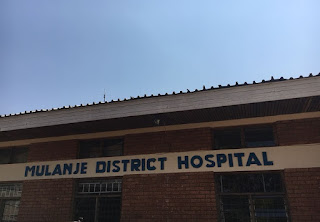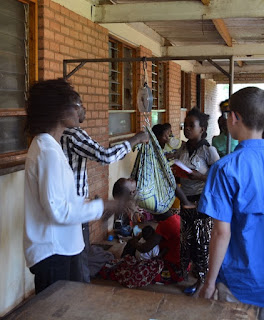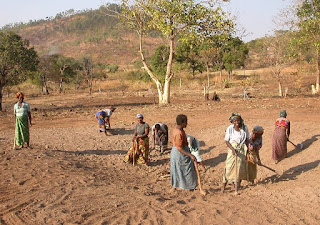No matter how many times I have visited Malawi, one of the
things that is always eye opening to me is seeing the local hospitals. The
people of Mulanje are fortunate enough to have two hospitals in the district. There
is Mulanje District Hospital that is owned and run by the government and
Mulanje Mission Hospital, which was opened by Scottish Missionaries in 1896 and
has been updated and added to periodically ever since. These two hospitals serve a population of
550,000 in the Mulanje area. Recently we
were given a tour of the District Hospital by our friend Deliwe Chikuwo who is
a Nurse Supervisor at the hospital. Having her show us around the hospital and
explain different aspects of how the hospital is run was such a blessing.

Because Mulanje District Hospital is run by the government,
anyone can come in and receive free care. Although this sounds wonderful,
logistically it causes some problems. It is not uncommon for the hospital to
run out of certain medications, for example malaria medications. During peak malaria
season most government hospitals run out of medication needed to treat malaria
due to the high number of cases that come in. When this occurs patients are
told to go to local pharmacies to try to buy the medication they need. In some
cases the medication is too expensive and the patient will go without it,
sometimes leading to more serious disease, or even fatalities.


At the District Hospital there are currently only two
doctors on staff. There are also clinical officers (similar to Physician
Assistants or Nurse Practitioners) and a full nursing staff. Health care here
in Malawi is very different than it is in the United States. There are no
primary care physicians, so any health care that is needed is done at the local
hospitals; this includes treatment and care for chronic conditions such as high
blood pressure, diabetes and HIV. Since there are not electronic medical
records, and the hospital staff is always changing, Malawians all carry health
care record books that are called “health passports” where all illnesses,
treatments, conditions, weight and height are tracked. In order to reduce
infection rates, children are weighed using their mothers’ own chitenges that
are hooked onto the scale.



With the hospitals being the main source of care for the residents
of the district, the hospitals tend to be very crowded and are often totally
full. A major factor of this is HIV. The Mulanje district has a higher than
normal rate of HIV (20% as opposed to the national average of 14%). This has a
huge impact on health services in the district, with 60% of hospital admissions
being HIV related.
When a patient is admitted to the hospital, they are given a
bed with just a mattress. Many of the beds and other hospital equipment has
been donated by organizations in the United States, replacing worn out
equipment. It is the responsibility of
the patient’s family to feed and take care of the patient during their stay in
the hospital. It is very common to see women doing laundry, so you see clothing
and fabric hanging out to dry around the hospital. Families can also be seen
cooking and feeding their family members.


There are a few ambulances in the district, but many of the
remote villages are not accessible by car. Because of this patients will have
to walk for miles and miles in order to come into the hospital. There are also
bike ambulances which are able to reach some of the more remote villages. They
are used to help patients travel to and from the hospitals. Since some of the villages are so far from the
hospital, women will travel to the hospital weeks before they are due to have a
baby, to ensure they are safely within distance of a hospital when their
delivery time comes. New buildings have been constructed to house these
awaiting mothers, which hopefully will decrease the rate of infant mortality
due to birthing complications.

As hard as seeing parts of the hospital can be, my favorite
part of the visits is always seeing the newborn babies. This time as we walked
through the nursery we saw two sets of twin boys that were just two days old!
Walking through the nursery, you will not see any of the fathers of the
children. In Malawi it is not customary for men to be present during the birth
of children. These little babies that are all wrapped up, or snuggled against
their momma’s chests are beautiful reminders of the bright future Malawi has.

Seeing a hospital in a developing nation such as Malawi
after working in health care in the United States is heartbreaking. It seems so
unfair that we have all sorts of life saving medications, procedures,
facilities, and professionals readily available to us. Today I hope you join me
in praying for justice in our world. Pray for the sick patients here in Malawi
receiving the best care they have available to them. Pray for the families who
have lost a loved one from an illness that would have been taken care of in a
developed country. Pray for the health care workers here and all the challenges
they face in order to bring their patients help. Pray for healthcare in Malawi.



















